
The Austroasiatic languages are a large language family spoken throughout Mainland Southeast Asia, South Asia and East Asia. These languages are natively spoken by the majority of the population in Vietnam and Cambodia, and by minority populations scattered throughout parts of Thailand, Laos, India, Myanmar, Malaysia, Bangladesh, Nepal, and southern China. Approximately 117 million people speak an Austroasiatic language, of which more than two-thirds are Vietnamese speakers. Of the Austroasiatic languages, only Vietnamese, Khmer, and Mon have lengthy, established presences in the historical record. Only two are presently considered to be the national languages of sovereign states: Vietnamese in Vietnam, and Khmer in Cambodia. The Mon language is a recognized indigenous language in Myanmar and Thailand, while the Wa language is a "recognized national language" in the de facto autonomous Wa State within Myanmar. Santali is one of the 22 scheduled languages of India. The remainder of the family's languages are spoken by minority groups and have no official status.

Olympus Mons is a large shield volcano on Mars. It is over 21.9 km high as measured by the Mars Orbiter Laser Altimeter (MOLA), about 2.5 times the elevation of Mount Everest above sea level. It is Mars's tallest volcano, its tallest planetary mountain, and is approximately tied with Rheasilvia on Vesta as the tallest mountain currently discovered in the Solar System. It is associated with the volcanic region of Tharsis Montes. It last erupted 25 million years ago.
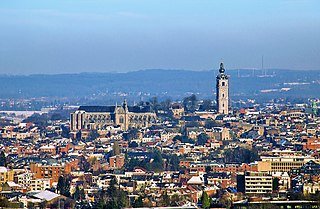
Mons is a city and municipality of Wallonia, and the capital of the province of Hainaut, Belgium.

The Mon are an ethnic group who inhabit Lower Myanmar's Mon State, Kayin State, Kayah State, Tanintharyi Region, Bago Region, the Irrawaddy Delta, and several areas in Thailand. The native language is Mon, which belongs to the Monic branch of the Austroasiatic language family and shares a common origin with the Nyah Kur language, which is spoken by the people of the same name that live in Northeastern Thailand. A number of languages in Mainland Southeast Asia are influenced by the Mon language, which is also in turn influenced by those languages.
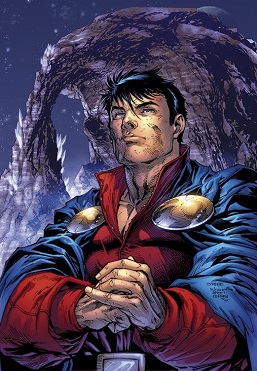
Lar Gand, known mainly as Mon-El, is a superhero appearing in American comic books published by DC Comics, commonly in association with the Legion of Super-Heroes, Superboy, and Superman. The character has been reinterpreted over the years, but in all versions serves as a hero with abilities similar to those of Superman, sometimes serving as a substitute for him.

The Tharsis Montes are three large shield volcanoes in the Tharsis region of the planet Mars. From north to south, the volcanoes are Ascraeus Mons, Pavonis Mons and Arsia Mons. Mons is the Latin word for mountain; it is a descriptor term used in astrogeology for mountainous features in the Solar System.
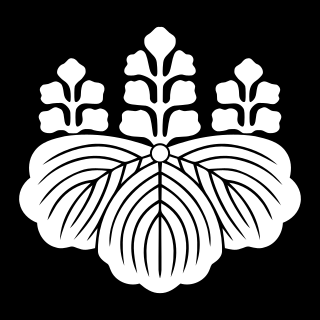
Mon (紋), also called monshō (紋章), mondokoro (紋所), and kamon (家紋), are Japanese emblems used to decorate and identify an individual, a family, or an institution, municipality or business entity. While mon is an encompassing term that may refer to any such device, kamon and mondokoro refer specifically to emblems that are used to identify a family. An authoritative mon reference compiles Japan's 241 general categories of mon based on structural resemblance, with 5,116 distinct individual mon. However, it is well acknowledged that there are a number of lost or obscure mon. Among mon, the mon officially used by the family is called jōmon (定紋). Over time, new mon have been created, such as kaemon (替紋), which is unofficially created by an individual, and onnamon (女紋), which is created by a woman after marriage by modifying part of her original family's mon, so that by 2023 there will be a total of 20,000 to 25,000 mon.
Royal Albert Elisabeth Club de Mons, simply known as R.A.E.C. Mons or Mons, is a defunct Belgian football club formed in Mons, Hainaut Province, in 1910 and based at Stade Charles Tondreau from 1910 to 2015.

Mons Hadley is a massif in the northern portion of the Montes Apenninus, a range in the northern hemisphere of the Moon. It has a height of 4.5 km (2.8 mi) 14,764 ft (4,500 m) above the adjacent plain and a maximum diameter of 25 km at the base.

Mons-en-Barœul is a commune in the Nord department in northern France.

Apollinaris Mons is an ancient shield volcano in the southern hemisphere of Mars. It is situated near the equator, south of Elysium Planitia and north of the impact crater Gusev. Elysium Planitia separates it from the volcanic province of Elysium to its northwest. The volcano's caldera is named Apollinaris Patera; this name formerly applied to the whole edifice.
Estrées-Mons is a commune in the Somme department in Hauts-de-France in northern France. The municipality was formed in 1973 from the merger of Estrées-en-Chaussée and Mons-en-Chaussée.
Burmese names lack the serial structure of most Western names. Like other Mainland Southeast Asian countries, The people of Myanmar have no customary matronymic or patronymic naming system and therefore have no surnames. Although other Mainland Southeast Asian countries introduced the using of surnames in early 20th century, Myanmar never introduced the using of surnames. So, Myanmar people don't have surnames. In the culture of Myanmar, people can change their name at will, often with no government oversight, to reflect a change in the course of their lives. Also, many Myanmar names use an honorific, given at some point in life, as an integral part of the name.

Tyrrhenus Mons, formerly Tyrrhena Mons or Tyrrhena Patera, is a large volcano in the Mare Tyrrhenum quadrangle of Mars, located at 21.36° south latitude and 253.47° west longitude. The name "Tyrrhena Patera" now refers only to the central depression, a volcanic crater or caldera. It was named after a classical albedo feature name. Pit chains are found at the summit of Tyrrhenus Mons. They are formed by collapse of material into underground voids. Since they form chains and concentric fractures that are aligned, they are probably caused by extension of the surface. Volcanic processes made the crust pull apart. Voids were formed, then material fell into them, leaving holes. It is one of the oldest volcanoes on Mars. As a consequence of its old age, Tyrrhenus Mons has many radiating gullies on its slope. When it was formed, magma may have gone through frozen ground and then erupted as easily eroded ash, instead of lava flows.
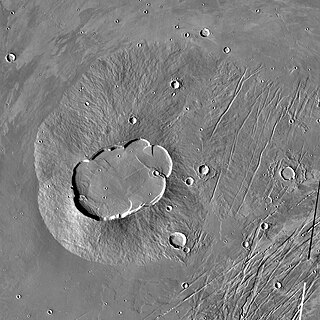
Uranius Mons, formerly Uranius Patera, is a volcano on Mars located in the Tharsis quadrangle, named after a classical albedo feature. The name "Uranius Patera" now refers only to the volcano's central caldera. It is 4,853 metres (15,922 ft) high and has shallow slopes. It belongs to the Uranius group of volcanoes in the Tharsis area. The sides of Uranius Mons consist of radial lava flows; the large caldera (90×65 km) is elongated in the southwestern direction. The surrounding plains are younger and part of the Tharsis Montes Formation of the Amazonian epoch.

Galaxius Mons is a group of mountains in the Cebrenia quadrangle of Mars, located at 34.76 North and 217.69 West. It is 22 km in diameter. The mountain range has a "classical albedo name". The term "Mons" is used for a mountain.

The kara-mon or kara-kado (唐門) is a type of gate seen in Japanese architecture. It is characterized by the usage of kara-hafu, an undulating bargeboard peculiar to Japan. Kara-mon are often used at the entrances of Japanese castles, Buddhist temples and Shinto shrines, and have historically been a symbol of authority.

The Mon–Burmese script is an abugida that derives from the Pallava Grantha script of southern India and later of Southeast Asia. It is the basis of the alphabets used for modern Burmese, Mon, Shan, Rakhine, Jingpho and Karen.
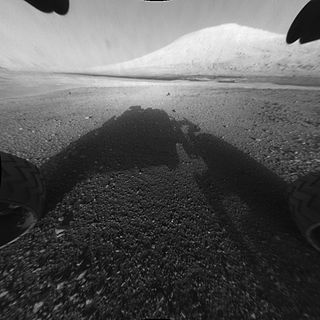
Mount Sharp, officially Aeolis Mons, is a mountain on Mars. It forms the central peak within Gale crater and is located around 5.08°S 137.85°E, rising 5.5 km (18,000 ft) high from the valley floor. Its ID in the United States Geological Survey's Gazetteer of Planetary Nomenclature is 15000.















